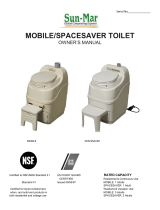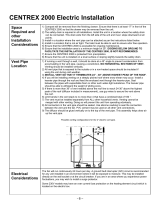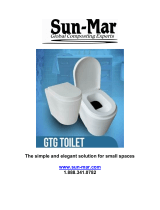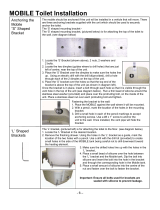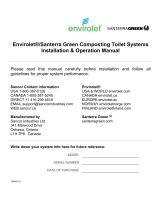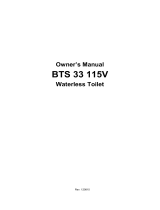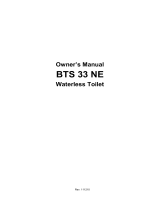CCoommppoosstt TTrroouubblleesshhoooottiinngg
SSyymmppttoomm CCaauusseeRReemmeeddiiaall AAccttiioonn PPrreevveennttiioonn
Compost
Too Wet
Waste not
Breaking Down
at all
If this is the
case, the drum
will fill up
quickly
Large Lumps in
Compost
Drum Too
Full
.
Flies Present
Compost porosity
is poor.
Drum screen clogged
Insufficient moisture in
compost
Insufficient Microbes
Room Temperature
under
55 ° F/13 °C
Compost Too Dry
Compost not emptied
into finishing drawer in
a timely fashion
Kitchen/Garden Waste
added
-compost too dry
-compost anaerobic
-kitchen/garden
waste added
-foreign material
added
Change bulking material to Compost Sure Green.
Spray the drum screen with Compost Quick. Scrub
the drum screen with wire brush.
A moisture content of 40-60% is ideal for aerobic
microbes to thrive.
Add Sun-Mar Microbe Mix .
Install heat source to increase temperature.
Temperature should be kept above 55°F/13°C con-
stantly to ensure the composting action does not stop
completely.
Add 1/2 to 1 gallon of warm water to compost in
order to bring it up to appropriate moisture level.
Remove lumps or break them apart.
Remove compost until drum is only half full or less.
Rotate compost thoroughly to aerate, and add com-
post accelerant(Compost Quick and Microbe Mix) if
available.
We do not recommend adding kitchen or
garden scraps.
1 .To eliminate flies, you can use any pesticide
that is used on your garden. Pesticides used
for garden use are not anti-bacterial so are
safe to use on your compost.
2. The alternative to using pesticides is to
completely clean the toilet out, wash the
inside with soap and water
IMPORTANT:
Application of a pesticide in a SUN-MAR toilet is not a
health concern because all SUN-MAR units are vent-
ed. If using pesticides, avoid spilling on the outer
shell of the composter.
Use Sun-Mar Compost Sure Green
Add water to patented bio-drum
Be sure to add microbe packet at
start up.
Install unit in warm area. The
warmer the area, the better your
compost will be!
Use proper bulking material and add
warm water if necessary.
When drum is 1/2 full, remove some
compost to the finishing drawer. Do
NOT let drum get above 1/2 full.
This will lead to lack of aeration, and
anaerobic compost.
Do Not add kitchen or garden waste.
1. Keep compost moist. In order to
determine a good level of
moisture, shine a flashlight into
the drum. The compost should
have a slight gloss or shine. If it
does not, add warm water to it
until it reaches this consistency.
Fungus gnats tend to be attracted
to a dry compost, due to the
fungus which begins to form on
the surface when it dries out. A
good, moist compost will not be
attractive to flies.
2. Do not add topsoil from the
ground, composted matter, or
kitchen scraps to the toilet. Flies
may be present in, or attracted
to these items.
3. Use “Compost Sure Green”.
- 14 -




















